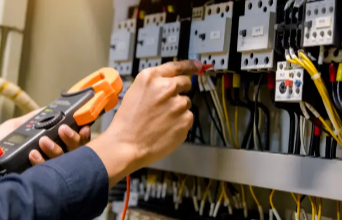How Does PowerPOD Enhance Data Center Efficiency?

PowerPOD 3.0 by Huawei represents a significant leap in power supply solutions for data centers. Its innovative design addresses vital efficiency aspects and meets the escalating demands of modern data storage facilities. A key highlight is its ability to optimize data center layout while ensuring energy and cost savings. This blog dives into the specifics of how PowerPOD improves overall data center efficiency, covering its energy optimization capabilities, scalability support, and cost-cutting potential.
How PowerPOD Boosts Energy Efficiency in Data Centers
Energy efficiency is a top priority for data centers aiming to minimize operational costs while meeting the growing demand for digital services. PowerPOD 3.0 delivers on this front with several innovations designed to optimize energy usage without compromising performance.
PowerPOD’s Modular Design for Energy Optimization
PowerPOD 3.0 employs a modular design, crucial for enhancing energy efficiency in data centers. The design uses the industry’s ultra-high-density UPS5000-H, resulting in increased power density per cabinet. This innovation means fewer cabinets are needed, as illustrated by reducing the cabinet count from 22 to 11 in a 12 MW data center. The reduced footprint allows for deploying additional racks, transforming available space into a productivity asset. This modularity simplifies installation and optimizes energy usage, contributing significantly to reducing the power supply system’s footprint by 40%.
See also: The Best Standing Desks With Cutting Edge Technology
How Does PowerPOD Support Scalability in Data Centers?
Data centers face the challenge of scaling their operations to keep pace with increasing demand for data storage and processing power. PowerPOD 3.0 addresses this need by providing flexible and scalable solutions that adapt to changing requirements.
How PowerPOD Supports Growing Data Center Demands
Data centers are experiencing increased demand due to the exponential growth of digital data. PowerPOD 3.0 adeptly handles this growth by offering a high-capacity and compact design, capable of scaling as demands increase. The converged architecture ensures that as more data racks are needed, PowerPOD can accommodate them without extensive modifications, thereby providing substantial flexibility and efficiency in scaling operations. The intelligent design minimizes downtime during expansions, addressing data center scalability concerns seamlessly.
Future-Proofing with PowerPOD’s Flexible Infrastructure
Future-proof data centers must adapt to evolving technology and operational demands. PowerPOD 3.0’s flexible infrastructure allows data centers to integrate new advancements without major overhauls. Its prefabricated busbars streamline internal connections, significantly reducing setup time. The solution’s AI-powered iPower feature offers predictive maintenance and intelligent settings, enhancing reliability and performance over long-term operations. By providing a 40% lower fault rate in Service Level Agreements, PowerPOD ensures that data centers not only meet current requirements but are also equipped to handle future innovations.
How Can PowerPOD Help Cut Costs in Data Center Operations?
Managing operational costs is one of the biggest challenges for data center operators. PowerPOD 3.0 provides significant savings by improving efficiency across several areas, from deployment speed to energy consumption.
How PowerPOD Reduces Operational Costs
Operational costs in maintaining data centers can be substantial, primarily stemming from power usage and maintenance. PowerPOD 3.0 addresses this by allowing faster and more efficient deployment through its modular architecture, shortening the delivery period from two months to two weeks. This swift setup not only minimizes labor costs but also accelerates service rollout, enabling faster time-to-market for data services. Moreover, PowerPOD’s efficient power management significantly cuts electricity bills, evolving into a cost-effective solution for data center operators.
Long-Term ROI with PowerPOD in Data Centers
Investing in PowerPOD 3.0 yields substantial long-term ROI for data centers. The dramatic decrease in power consumption translates into annual cost savings, coupled with the reduced need for frequent infrastructure upgrades, thanks to its future-proof design. Additionally, the AI integration for predictive maintenance reduces unexpected outages and repair costs, enhancing operational reliability. The cumulative effect of these savings ensures a compelling ROI, making PowerPOD 3.0 a smart choice for organizations aiming to maximize data center efficiency and financial performance.

Conclusion
PowerPOD 3.0 heralds a new era of efficiency in data center management. Its modular design, remarkable energy savings, and support for scalability provide an advanced and reliable power supply solution. By reducing operational costs and ensuring high efficiency, PowerPOD establishes itself as an indispensable asset for modern data centers. Adopting PowerPOD 3.0 means embracing a future of enhanced efficiency, sustainability, and profitability, making it a wise investment for forward-thinking data center operators.





